The Spectacular Affair at 102 Anna Lake Lane offered at 8.6 million
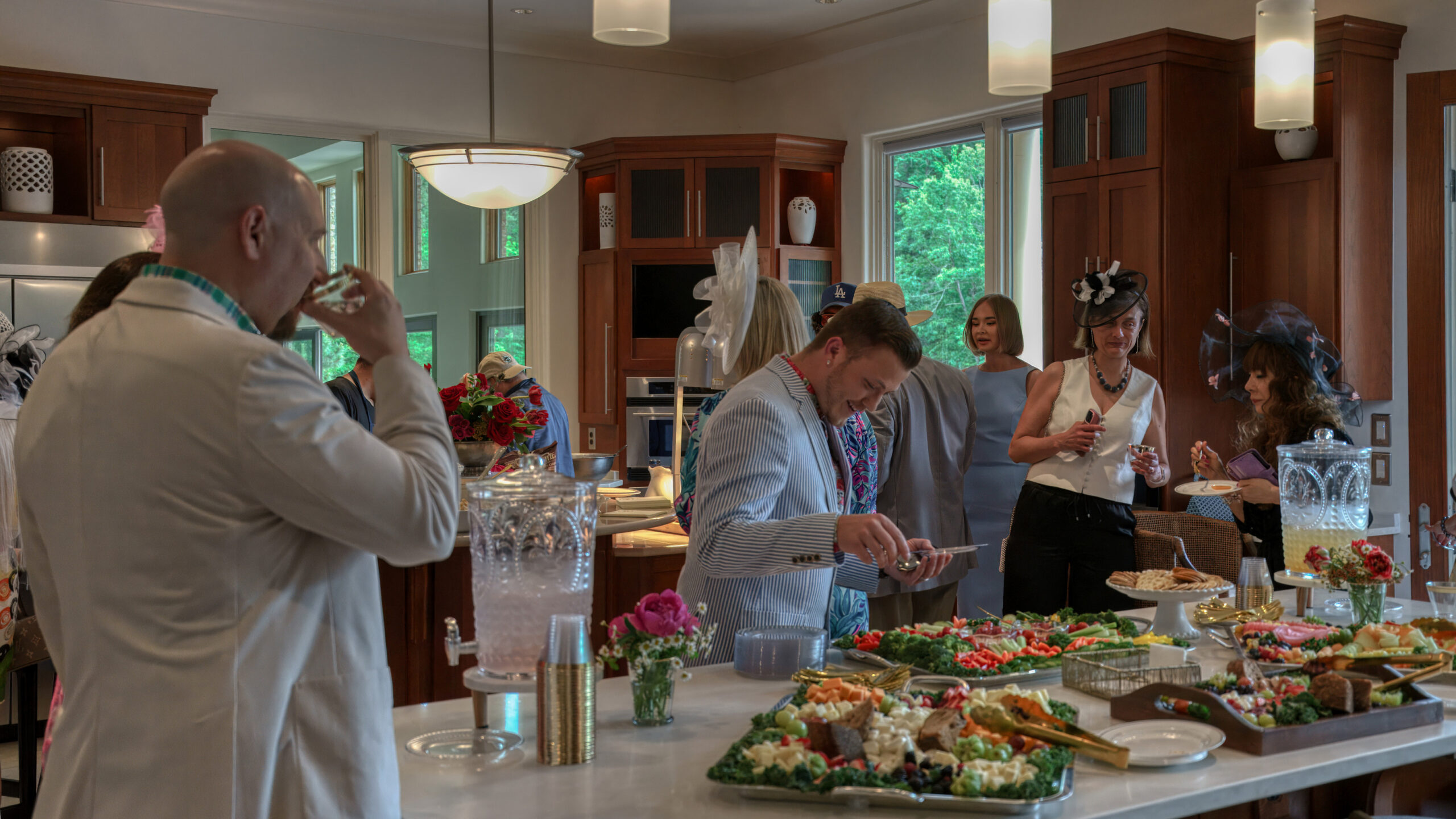
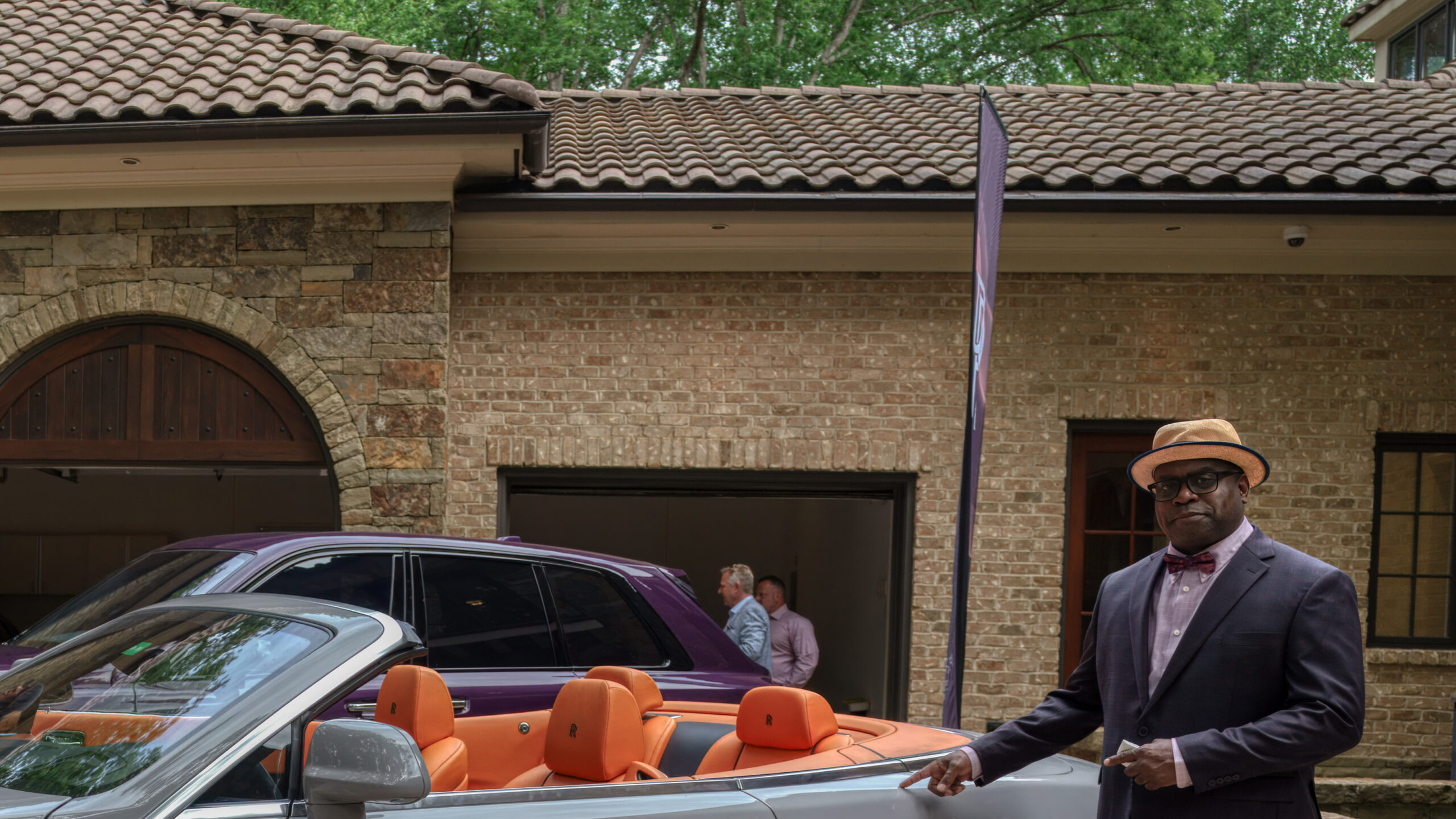



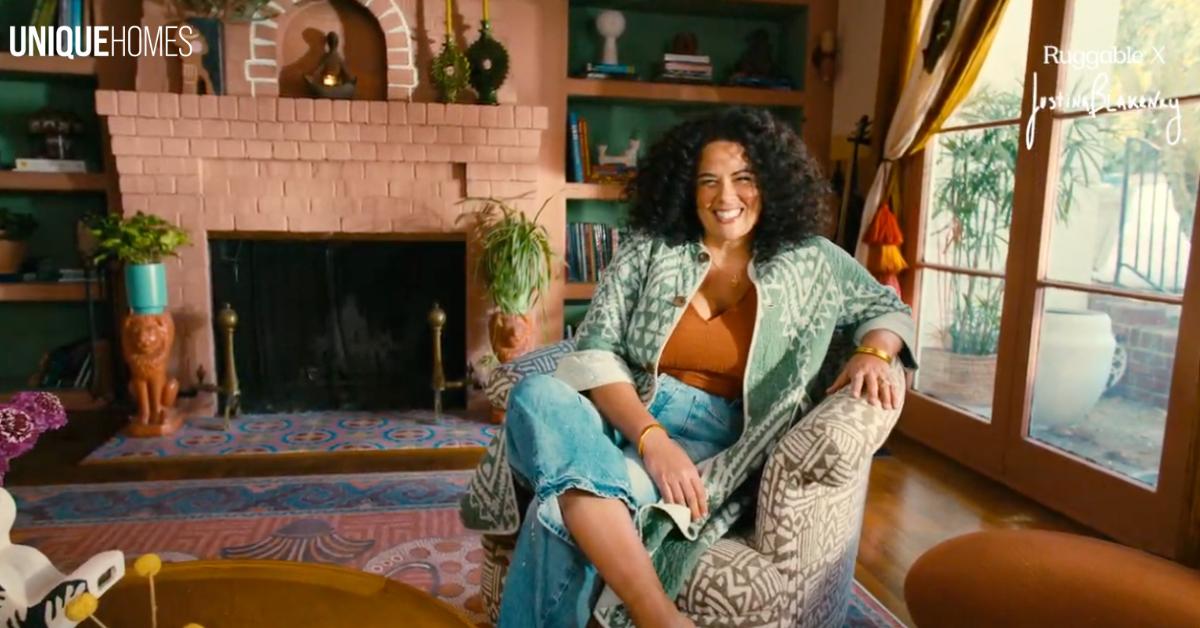
Vibrant colors, eclectic patterns, and a deep connection to nature — these are just a few elements that define Jungalow, the bold and inspiring lifestyle brand founded by Justina Blakeney. More than just a design studio, Jungalow has become a movement, bringing warmth, creativity, and soul into homes around the world. And we were lucky enough to speak with her about the story behind her brand, her approach to design, and how she seamlessly blends creativity with business. At its core, the brand is about more than just looks — it’s about how a space makes people feel.
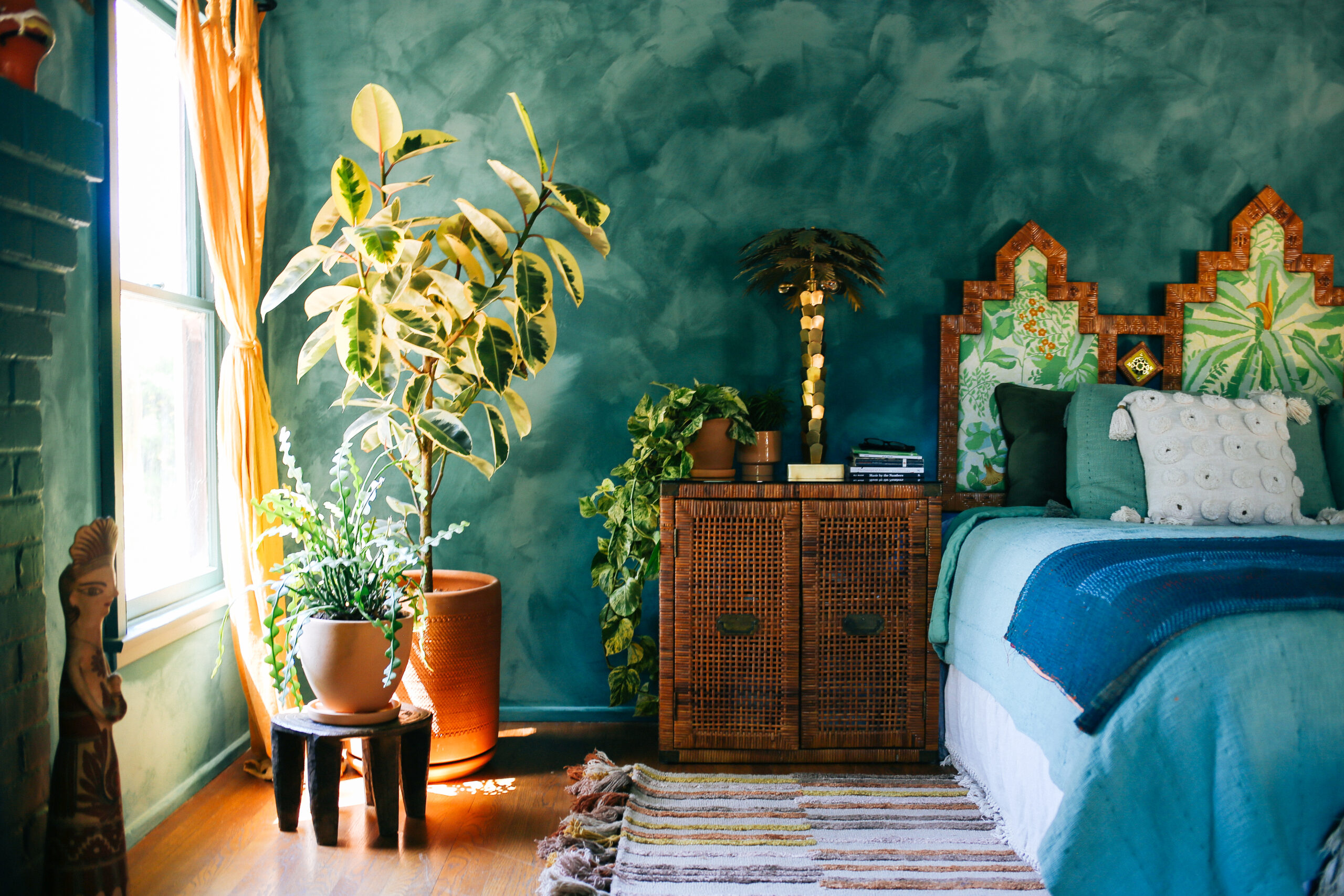
Blakeney’s journey into design started as a personal exploration, a digital space where she could share creative inspiration. What began as a small corner of the internet soon blossomed into a thriving design studio and, ultimately, a lifestyle brand. Through Jungalow, she has built a platform that celebrates self-expression, sustainability, and the power of joyful spaces.
Her design philosophy is rooted in creating homes that nourish the soul and support the dreams of those who live in them. As Blakeney puts it, “I believe that good design has the power to heal and uplift — it’s a way to foster well-being and encourage growth.” Rather than following fleeting trends, Blakeney approaches each space with curiosity and intuition. She believes good design is more than just aesthetics — it’s about how a space functions, how it feels, and how it serves its inhabitants.
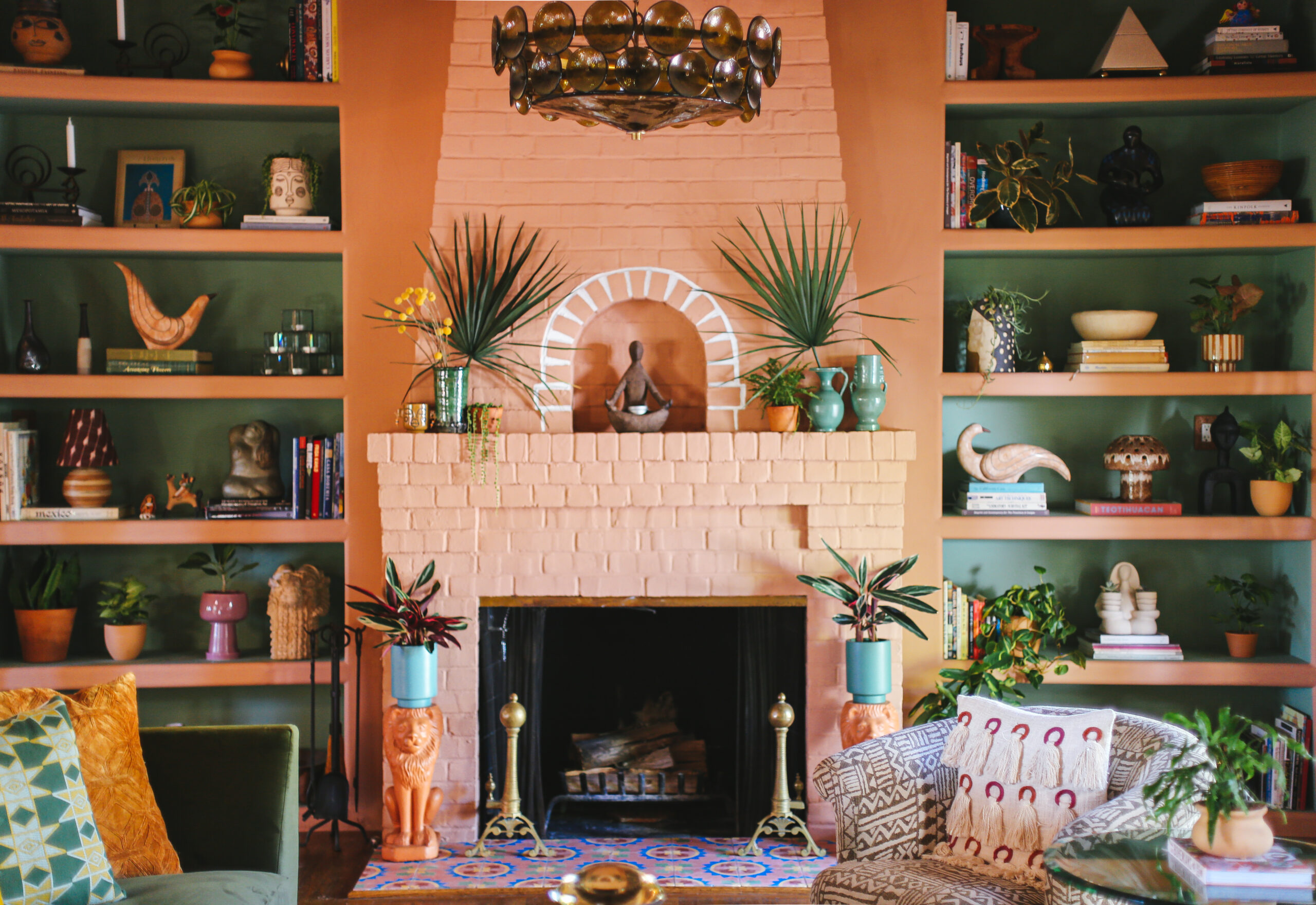
Every home tells a story, and Blakeney believes that the environment speaks to those who take the time to listen. “The first thing I do is spend time in the space to really get to know it,” she explains. “I’ll observe it at different times of day to see how the light shifts and how it changes the vibe of the room. Light is an underrated player in the world of color — it can completely transform a space and all the hues in it.”
A key element of her work is color. While many interiors over the past decade have been dominated by neutrals, Justina Blakeney sees a shift toward bolder, more expressive hues. She notes that more homeowners are embracing vibrant palettes. “I have noticed that the masses in the United States are starting to embrace color more, which feels like a new, emerging trend,” she says. “Color has a real power to bring so much joy, soul, and feeling into our lives and spaces. It’s lovely to see that taking root here in the U.S.” By incorporating rich colors and layered textures, she believes spaces can spark joy, inspire creativity, and uplift the people who live in them.
As the founder of a fast-growing brand, Blakeney seamlessly merges business and creativity. For her, these two elements are deeply intertwined. “For me, business is creativity and creativity is business. The two are more intertwined than intersectional,” she explains. “There are so many ways to exercise my creativity within my business — from designing products and spaces to creating marketing campaigns or discovering how different partnerships are going to unfold. It’s all a big creative process.”
This philosophy is also evident in her collaborations. Unlike traditional design houses that often cater to exclusivity, Jungalow’s mission is to make beautiful, personality-driven spaces more accessible and inviting. Blakeney believes that a home should feel cozy, playful, and full of life, rather than intimidating or overly curated. As she shares, “We want to make spaces that feel warm, inviting, and alive — homes should be fun and cozy, not intimidating! At the end of the day, a home is a reflection of the humans (and other living creatures, like pets and plants) living in it, and humans are naturally drawn to good vibes.”
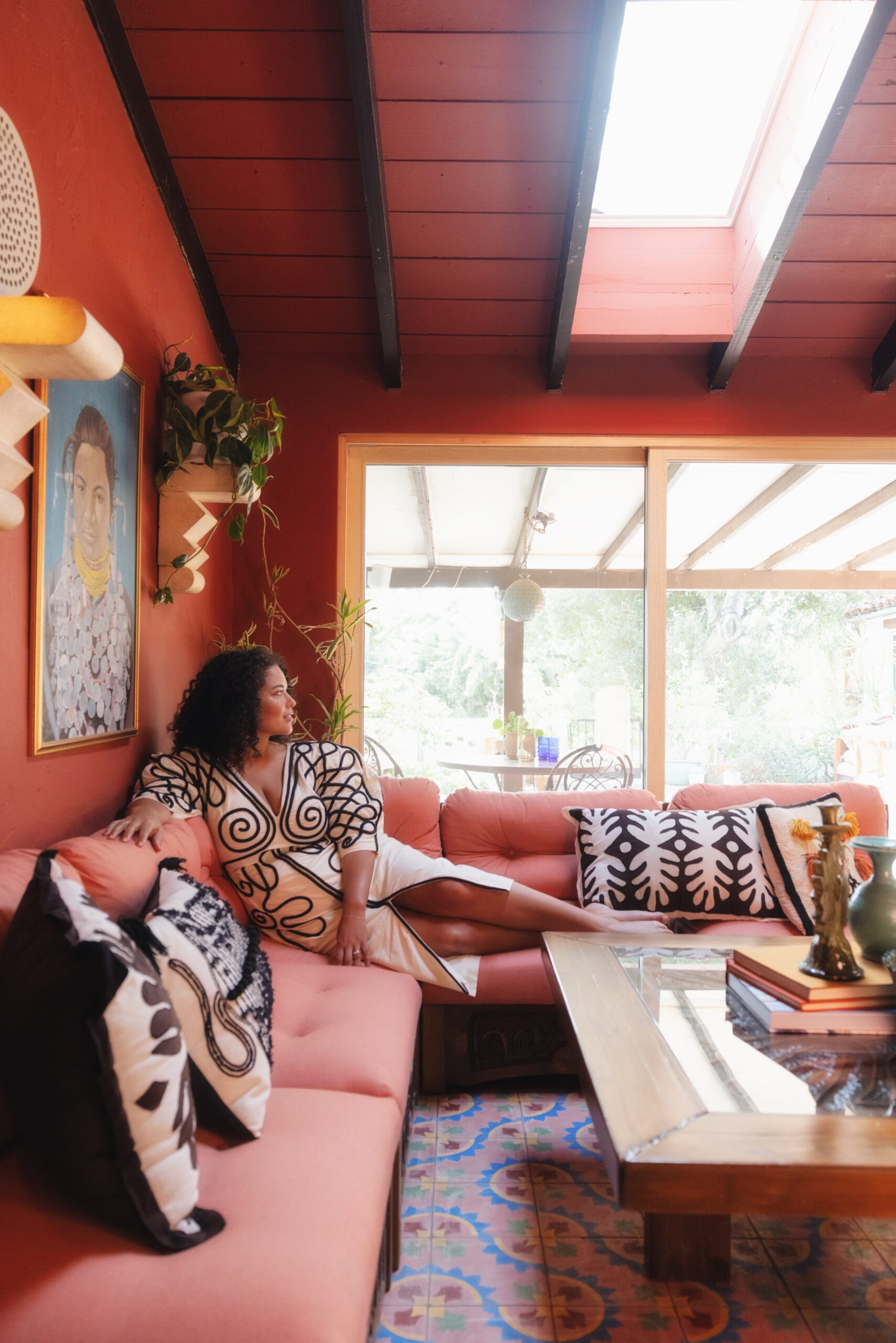
Looking ahead, Jungalow is taking a major step toward sustainability and social responsibility. The company is in the process of becoming a B Corporation, a designation that reflects its commitment to ethical business practices, environmentally responsible design, and mindful material sourcing.
Blakeney is deeply invested in making sure that every aspect of Jungalow — from the products it sells to the partnerships it fosters — aligns with values of eco-consciousness and community engagement. “I’m committed to being more mindful in everything we do at Jungalow—from the materials we use to the way we engage with our community and partners. It’s about doing things with intention and care.” Whether it’s using sustainable materials, supporting artisan communities, or reducing waste in production, she sees intentionality as a crucial part of modern design.
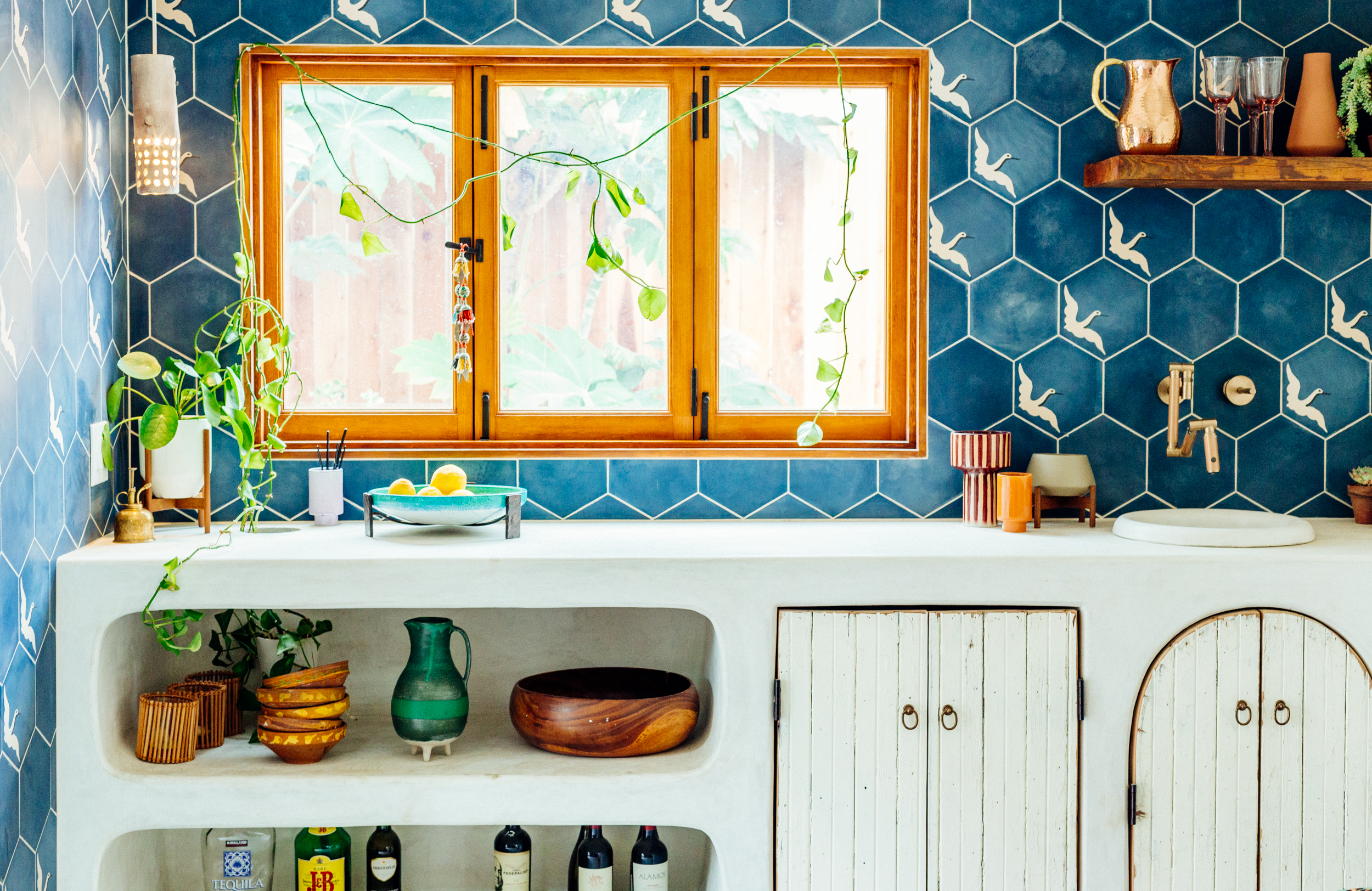
At its heart, Jungalow is about more than just design — it’s about cultivating joy, embracing imperfection, and creating homes that feel like a true reflection of their owners. Whether through a carefully placed houseplant, a bold accent wall, or a mix of globally inspired textures, Blakeney encourages people to design spaces that energize and inspire.
As Justina Blakeney continues to expand her brand and explore new creative directions, one thing remains constant: her belief that good design has the power to heal, uplift, and bring people closer to the natural world. With Jungalow leading the charge, the future of interior design looks brighter, bolder, and more joyful than ever.


The top 10 most expensive properties in the U.S. showcase emerging trends in the luxury real estate market, underscoring the desires of the ultra-wealthy. Priced between $108 million and $195 million, these homes are primarily located in California and Nevada, with Los Angeles dominating the list. The West Coast’s appeal lies in its breathtaking vistas, innovative designs, and indoor-outdoor lifestyles, epitomizing modern opulence.
From Beverly Hills to Bel Air, California claims nine of the spots on our list, while Nevada offers one spectacular Lake Tahoe retreat with endless opportunities. These estates are located in regions renowned for privacy, exclusivity, and access to natural beauty.

Designed by master architect Ed Tuttle, this estate — an architectural work of art — sits on a six-acre promontory with panoramic city-to-ocean views. Its Italian limestone façade and geothermal technology seamlessly blend sustainability with luxury. The home includes 16 bedrooms, 27 bathrooms, and standout amenities such as a home theater, tennis court, and much more.
This Lake Tahoe estate offers unparalleled serenity, with private beach access and expansive views. It’s a haven for those seeking a connection to nature while enjoying luxurious modern living. Contact Shari Chase, Chase International about this once-in-a-century opportunity to own all or a part of Lake Tahoe’s most prized lakefront in Glenbrook, Nevada.
The No. 2 property is also our President’s Pick: “With 130 open acres for horseback riding and more, along with a spacious entertainment barn, pool house, spa, gym, and art loft, there’s endless room to explore. Plus, the 465-foot private pier on Lake Tahoe offers boating and serene waterfront dining — it’s so beautiful,” says Stuart Santos, president of Unique Homes Media, Inc.


Coming in at No. 3 is Casa Encantada. With sprawling grounds and opulent interiors, this property exemplifies refined elegance. The finest details and additions can be found throughout the property. From the spiraling grand staircase and abundance of natural light to the tropical botanical gardens outside. Everything about this property feels royal.
This nine-bedroom, 20-bath estate stuns! This Palladian-inspired villa boasts soaring ceilings, intricate woodwork, and expansive glass walls that define the space, merging indoor and outdoor living.
“From the sweeping terraces and breathtaking vistas, every inch of this estate is designed for elevated living. Elegant entertaining, and unmatched beauty,” says Linda May, Carolwood Estates. “Whether hosting intimate gatherings or glamorous soirées, Villa dei Fiori provides an exquisite backdrop of exclusivity.” This L.A. home is truly unforgettable.
“Villa dei Fiori appeals to modern luxury buyers with its perfect blend of timeless elegance and contemporary amenities. Its secluded location behind private gates ensures ultimate privacy, while panoramic views of the city skyline and ocean are unsurpassed. Extensive entertainment areas, including a wine cellar, screening room, disco/lounge with a built-in bar, and outdoor dining terrace, provide ample space for socializing,” adds May.


Set amidst picturesque landscapes, this estate is a rare blend of privacy and accessibility in Southern California. 40+ years in the making, this property boasts 42 acres with truly impressive potential for agricultural income and is accessible by a long winding private drive for privacy.
Another incredible find in L.A. is this Holmby Hills property that features the most luxurious in and outdoor living areas. Inside, luxuriate in natural light and enjoy the finest finishes. Outside boasts spa-quality pools and expansive gardens, a tennis court, and much more.
Aaron Kirman’s second listing among the top 10, is an estate that offers unparalleled privacy. Innovative architecture, and wellness amenities designed for modern living. With 8 bedrooms and 20 baths, this home leaves nothing to be desired.


Marc Noah of Sotheby’s International Realty showcases a property with breathtaking views and a contemporary design.
Situated on a sprawling 2-acre property, this magnificent estate boasts 12 expansive bedrooms, 17 luxurious bathrooms. An array of world-class amenities, all with breathtaking panoramic views of L.A. Beyond the gated motor court, a grand oversized glass entryway welcomes you into one of the most spectacular and lavish residences in the world. At its heart, a striking spiral staircase encircles a mesmerizing 44-foot chandelier adorned with 55,000 crystals. Just one of the many exquisite custom lighting installations that elevate this home’s elegance.
Another gem represented by Aaron Kirman, this estate resides over the esteemed Bel Air Country Club Golf Course. You do not want to miss the grand facade adorned with intricate stonework and inviting you in even from a distance.
“10936 Chalon Road is the epitome of grandeur and sophistication, located in the prestigious Bel Air community,” says Kirman. “With its expansive estate grounds, world-class amenities, and breathtaking views. It stands as a true sanctuary for those who value exclusivity and elegance.”


Known as “The Sand Castle,” this property channels French Riviera elegance. Brett Dickinson, advisor and broker associate at The Dickinson & Clark Team, and Ross Clark, advisor at The Dickinson & Clark Team describe it as “a homage to the finest manors, with extraordinary views of the Pacific and coastline to the south, west, and north.”
“There are several reasons why The Sand Castle is such a unique property. Firstly, the fact that someone was able to adjoin and then build on two parcels on the waterfront with the sea walls, its own private, on-property beach. In a remarkably iconic location and create such a magnificent work of art that can never be replicated, is a staggering accomplishment.”
“The Sand Castle is La Jolla’s most iconic waterfront jewel,” adds Dickinson.


Beyond their grandeur, these homes reflect the aspirations of the world’s elite. Every detail, from sustainable features to bespoke craftsmanship, is a testament to the pursuit of perfection. This list serves as a window into a world where luxury knows no bounds, setting the stage for the next evolution in opulent living.

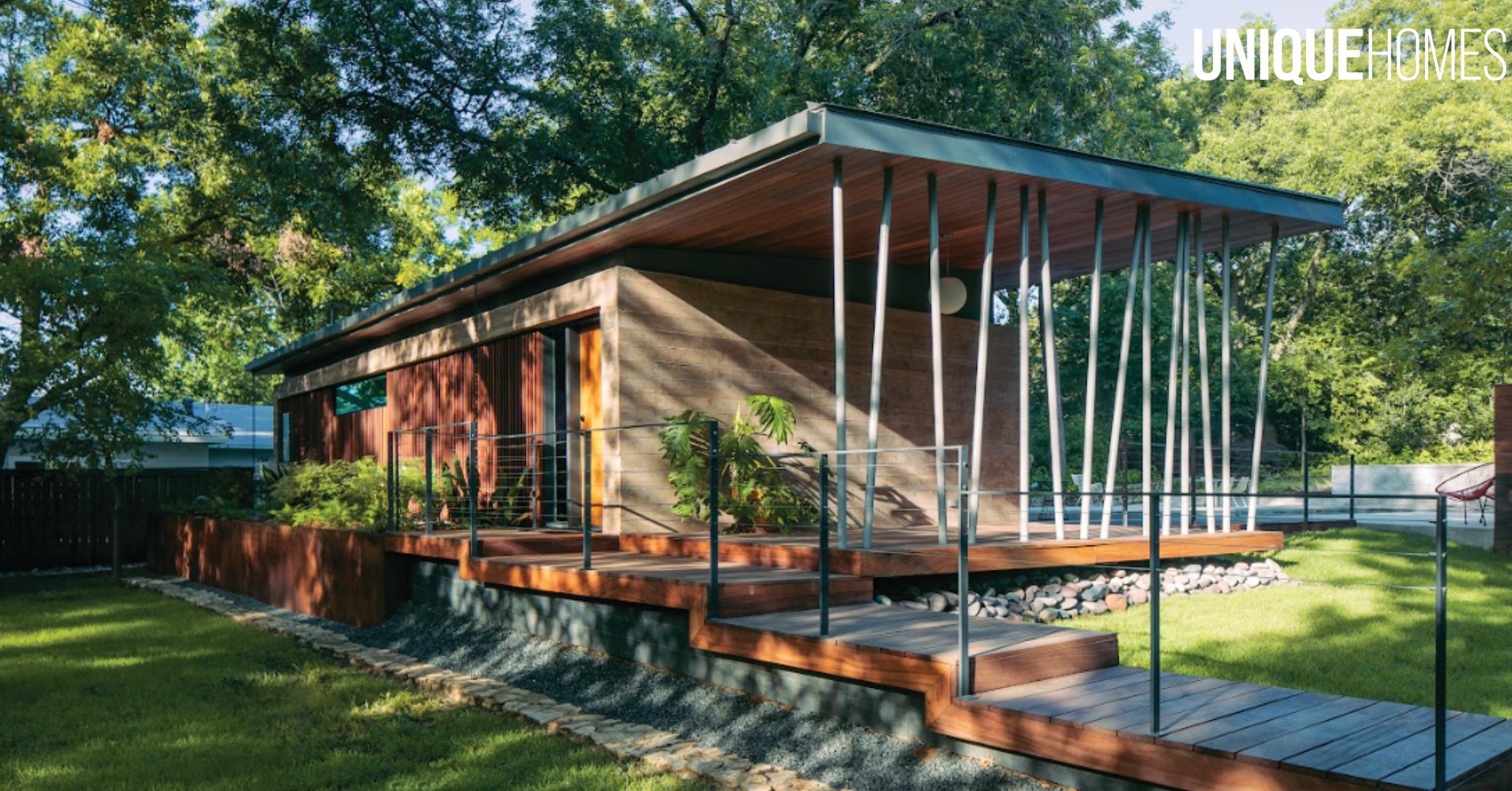
Accessory dwelling units (ADUs) might sound like a new-fangled option for housing, but the concept dates back centuries. Luxury granny flats, guest cottages, and casitas were customary accessories to the main house. It was rare for an estate not to have a carriage house or outbuildings for staff. All these options fall under the mantle of an ADU. Architects such as Jeff Kruth and Murali Paranandi, professors of architecture at Miami University, call them “the original compact housing.” Still, research, including a recent Freddie Mac survey, finds that 71% of consumers are unfamiliar with the concept or the term.
Today, ADUs are being touted as potential solutions to diverse housing challenges, from affordability to changing demographics. And rather than just a place to stash granny, they are increasingly perceived as an option that benefits all age groups.

An ADU is a second house or dwelling constructed on a single-family lot that typically is subordinate to the main house. As defined by Freddie Mac, an ADU is an independent living unit. A private entrance, heating and cooling system, bathroom(s), and kitchen are required. Typically, according to John Burns Research and Consulting, the primary home and the ADU are considered one property for tax and appraisal purposes.
ADUs can be built from the ground up or created from existing spaces such as a basement, garage, or attic. Whether attached or detached from the main house, they are required to have a separate entrance.

Mention these accessory dwellings, and most people envision something akin to a tiny house. Which the International Building Code classifies as 400 square feet or less. What surprises most about ADUs is “how large they feel and how functional they can be.” Says Sheila Hedden, owner of Superior ADUs, a design-build firm in Orange County, California. While some might have square footage comparable to a tiny house, many are substantially larger. Often measuring 1,000 square feet, even 1,200 square feet in some locations, with multiple bedrooms and baths.

A recent survey commissioned by AARP asked adults 18 years and up why they would consider creating an ADU. A vast majority, 86%, said it would be to provide a home for a loved one in need or to create housing for relatives or friends. Three-quarters said their motivation was to create a place for a caregiver or a nanny. Approximately 69% said it would increase the value of their home. Other incentives measuring over 60% included: “67% would feel safer by having someone nearby.”
Projected uses include multiple scenarios in which having a smaller structure extends options for families. “We are seeing people from all demographics. We see the most interest from homeowners who want to build for family members. Many are built for aging parents, or their young adult children who can’t afford to buy a home. Some are building for themselves and allowing their adult children and grandchildren to move into their primary homes. They downsize, while their adult children upsize. It’s a great way to increase affordability for all involved,” says Hedden. “Even those homeowners who build them for family members are thinking about future rental income, as well as increasing the value of their properties.”
Recognizing the lack of opportunities to develop new housing, the California legislature passed a suite of new legislation beginning in 2016. It aimed at facilitating ADU construction by easing zoning and land use regulations. According to the California Department of Housing and Community Development, the total number of ADUs permitted in the state rose. It rose from just under 9,000 in 2018 to nearly 24,000 in 2021.
“The demand continues to grow,” adds Hedden. “In 2020, we received many calls from people who were interested but not yet ready to pull the trigger. Some were skeptical about whether the state laws facilitating ADU builds would continue. Since then, it’s gotten easier to build ADUs, and the calls have increased.”

California might be perceived as the leader of the current ADU vanguard, but states and municipalities nationwide have been proactively relaxing zoning restrictions. New Hampshire and Vermont allow ADUs nearly everywhere single-family housing is permitted. New Hampshire’s 2017 legislation stemmed from builders’ frustration. At not being permitted to construct the backyard cottages and garage apartments clients requested. In 2022, Maine legislators began requiring municipalities to allow ADUs and duplexes to be built on land zoned for single-family housing. In Oregon, cities and counties of specific sizes are obliged to allow ADUs in all single-family areas within urban growth boundaries. In 2021, the state extended ADU rights to rural residential areas. Other states allowing ADUs, according to AARP, include Connecticut, Rhode Island, and Utah.
Local zoning is equally instrumental to ADU creation, with local regulations determining location, size, parking and other characteristics even in pro-ADU states. “Some communities allow almost any home to be set up with an ADU. So long as size limits, property line setbacks and placement caveats in relation to the primary dwelling are met. Others start with those basic standards and then layer on extra requirements that can make it challenging to create an ADU,” observes AARP in their deep dive into the topic, “The ABCs of ADUs”. Many cities now allow ADUs, including Anchorage, Atlanta, Annapolis, Asheville (N.C.), Austin, Denver, Honolulu, Houston, Louisville, Philadelphia, Phoenix, Tucson, Seattle, and Washington, D.C.

The approval process can be lengthy. To facilitate this, some cities are creating pre-approved plans for the dwellings. In January 2023, Sacramento released permit-ready, one- and two-bedroom ADU plans that meet all local residential building code requirements and are all electric. In 2021, Los Angeles created a program offering more than 20 different designs that incorporate elements of diverse architectural styles in the city. There are one and two-story plans, some with roof decks.

“Creating pre-approved plans streamlines the development process for these housing types; residents can immediately begin seeking a permit after submitting a site plan. Additionally, at 750 square feet, the plans are not subject to impact fees,” says Nicholas Julian, program manager of land use for the National Association of Home Builders.
For anyone looking to create a new structure, options range from prefab homes, often produced by notable designers and architects, to custom plans.
“All of our ADUs are built from the ground up and are referred to as stick-builds,” says Hedden, who compares them to small custom homes. “With the help of our designers, our clients select their own flooring, cabinets, countertops, etc. Clients can choose to include a tile backsplash in the kitchen and tiled showers with niches. We recommend cathedral ceilings, which give the ADUs an open, airy feel. Many clients love the exterior farmhouse look, which we provide if it is acceptable in that city. Clients can choose high-end finishes with engineered hardwood floors, black matte hardware and fixtures, and high-end quartz countertops.”
Costs vary depending on size, number of bathrooms, location of utility connections, the type of finishes and locations. Permits and fees tack on additional dollars.


Not only do these secondary dwellings offer the potential for rental income, but recent changes in FHA policy allow a substantial percentage, as much as 75%, of rental income to qualify for a mortgage. Loans for new home construction can also include an ADU, which, according to the National Association of Home Builders, allows new homes to be built with ADUs from the ground up.

The world may be shrinking, but the international luxury market is ever-expanding. While foreign buyers continue to invest in high-end properties in New York, Miami, and Los Angeles, American buyers continue discovering luxury markets around the globe. Fueled by maturing economies, rich cultures, and spectacular environments, there are diverse international frontiers for luxury buyers.
In major cities throughout Europe, Asia, and the Americas, there are robust luxury real estate markets, even in places where free enterprise has not always been a foundational principle. Bob Hurwitz, founder and CEO of Hurwitz James Company, a global luxury real estate firm headquartered in Beverly Hills. He estimates that more than 60 percent of wealthy Americans already own foreign properties. Hurwitz, who represents both American and foreign buyers, maintains that investment motivations are diverse and transcend economics. “For properties that aren’t priced in the stratosphere, it’s often a combination of the desire to invest in a different country and enjoy an appealing lifestyle, usually at a significant discount to something similar in the States,” he says.

Hurwitz explains that most ultra-wealthy individuals still work, and being able to do so remotely makes living overseas a seamless proposition. “For pricy trophy properties, there’s yet another dynamic and that’s the cachet of owning a showplace as one of your assets,” says Hurwitz. Among his company’s current listings — one truly representative of that rarefied real estate category. A sprawling Swiss castle near Lake Geneva, offered at approximately $58.5 million. “It’s an amazing estate, once owned by the Italian royal family and built in 1625,” reports Hurwitz.
Paris’ combination of world-class architecture and refined culture can result in staggering real estate prices. As a result, some buyers — 12,000 Americans moved to France in 2023. Lorraine Gemigniani of San Francisco Bay Area-based Berkshire Hathaway HomeServices Drysdale Properties now resides in the Loire Valley and specializes in luxury French real estate. Illustrating the nation’s affordability (outside of Paris), the agent jests, “You can buy a petit château in the Loire Valley for $1 million, but could hardly find a carport for that amount in Tiburon [Marin County, California].”
The debut of its Opera House in 1973 signaled a new era for Sydney, Australia, where a world-class city blossomed around the iconic structure. The pandemic stalled the luxury market, but lower interest rates, perceptions of good value. A return of investors from China are contributing to making 2024 a banner year for high-end real estate in Sydney. “I love Sydney,” quips Hurwitz, who observes, “The city’s luxury market is very strong with demand and prices rising.” A 28,800-square-foot waterfront mansion in exclusive Point Piper, listed by Forbes Global Properties. Expected to yield at least $134 million, shattering Sydney’s existing record sales price. Further afield, in French Polynesia, the Hurwitz James Company offers Villa Aquamaris for $52.5 million. An extraordinary beachfront property in Bora Bora featuring the largest private aquarium in the world.
Dubai has become an international metaphor for an over-the-top lifestyle encompassing seven-star hotels. Gold leaf-covered steaks, and fleets of Lamborghinis. The dynamic United Arab Emirates metropolis also showcases mind-blowing residential properties. From private villas to penthouses with unbridled amenities. Helena Moyas de Forton, managing director at Christie’s International Real Estate, her responsibilities encompass Europe, the Middle East, Africa, and the Asia-Pacific region. She reports that the total value of sales in the city during the first half of 2024 was approximately $63.5 billion. Easily eclipsing the previous record for any six-month period in Dubai.


Buyers from the Middle East and Europe continue to fuel a boom in central Dubai. De Forton reports luxury buyers are also drawn to a resort lifestyle in outlying Ras Al-Khaimah. A 6,700-square-foot contemporary beachfront villa on Dubai’s Palm Jumeirah is currently offered by Christie’s for about $12.3 million. While forthcoming residences at Four Seasons Private Residences at Dubai International Financial Centre include an extraordinary penthouse priced at about $57.2 million. While branded residences bearing the names of luxury hospitality, fashion, or automotive brands are particularly popular in Dubai. De Forton reports the trend is expanding to emerging markets such as Bangkok, Thailand.

Lisbon was long overlooked in favor of more iconic European cities, but that has changed, with American and European expats now flocking to Portugal. “Lisbon is really at the apex in terms of appeal to foreign buyers, Americans in particular,” says Hurwitz. Despite the expiration of some favorable tax incentives for foreigners, de Forton confirms Lisbon remains in demand. “Because of the [shared] language, Portugal has always been popular with Brazilians. The luxury market has been strong even though the broad market was softer in 2023,” she advises. Concurring is Carlos Mangas, business manager at Berkshire Hathaway HomeServices Atlantic Portugal, who says. “Luxury residences are selling very fast, and if Lisbon had a greater availability of new developments, they’d sell out before construction was finished.”
Mangas suggests affluent Brazilians also appreciate the safety of Lisbon and its versatility. “American buyers’ perception of Portugal is of castles and ancient villages, so they’re amazed when I show them modern penthouses or homes,” he says. Not far from the capital, the oceanfront communities of Estoril and Cascais are also experiencing a robust luxury market. With sleek contemporary architecture, this “Portuguese Riviera” is somewhat reminiscent of Malibu, California. Mangas reports that Brazilians are primarily driving that market. But proffers, “Once Americans discover the area, it won’t stop.”

According to de Forton, the high-priced London market is rebounding, and the Spanish capital is trending. “Madrid is one of the most attractive markets at the moment, although prices are increasing and there’s not much inventory,” she says. In Marbella, on Spain’s fashionable Costa del Sol, DDRE Global — the firm founded by Daniel Daggers. Netflix’s “Buying London” fame — offers a nine-bedroom villa for approximately $25.65 million.
According to leading universities and trade associations, artificial intelligence (AI) is poised to transform the real estate industry. Its potential value is particularly pronounced in international transactions. Through analyzing global trends, navigating bureaucracies or languages, and negotiating contract terms. Practical applications for overseas house-hunting are emphasized by Dana Bina, chief technology officer at Christie’s International Real Estate. “International real estate transactions benefit from generative AI by allowing consumers to determine possibilities for particular spaces using product-visualization tools,” she says.
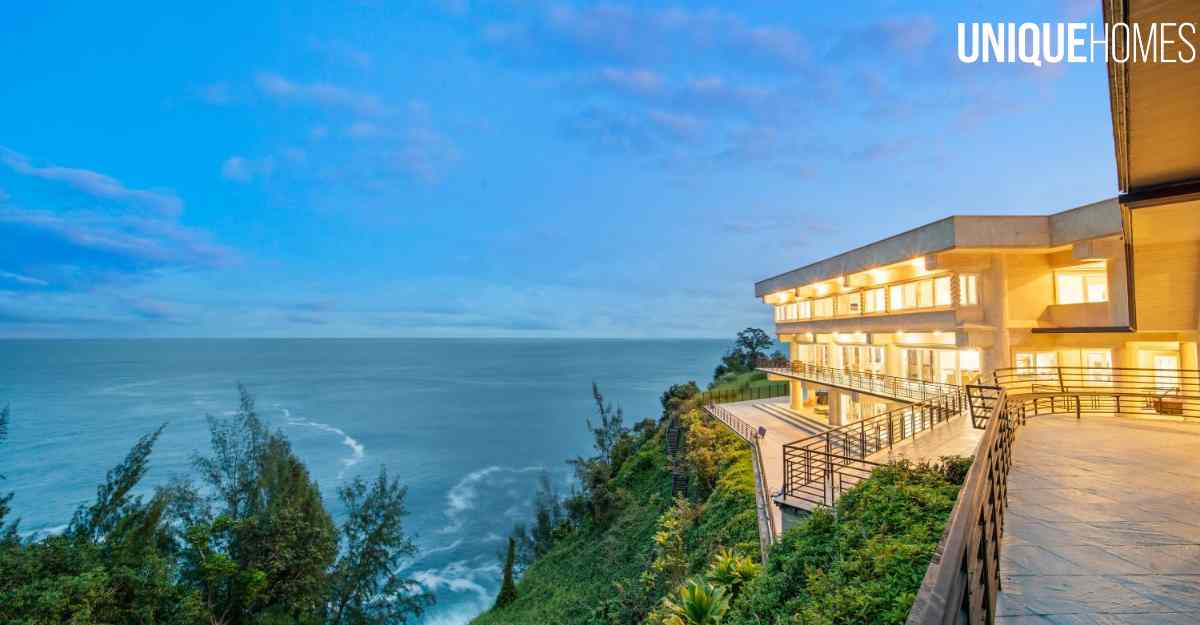

Led by its visionary CEO Ryan Sawchuk, the company has ambitious plans to restore the property to its former splendor. By partnering with the original builder and remaining true to the home’s architectural vision, ReUp Living intends to rejuvenate this iconic estate.
The restoration project has captivated attention, not only due to the property’s celebrity ties but also because of the unique design and natural materials that were incorporated into its original construction. The property, which once hosted some of Bieber’s most private and luxurious escapes, is now undergoing an extensive facelift that honors its past while integrating modern touches.
To gain insight into the restoration plans, we spoke with Sawchuk, who shared his vision and the steps they’re taking to restore Justin Bieber’s Vacation Home to its former glory.

Q: What will the first step be in the renovation process?
A: “We will begin by focusing on the exterior, which features rare materials such as travertine tiles from India and Italian granites that were unfortunately painted over. We plan to restore these materials. Our exterior work will also include the pool and the nine-hole golf course. Once the exterior is addressed, we will shift our attention to the interior.”
Q: What aspects of the original architect’s vision are you most inspired by, and why?
A: “The original architect skillfully sourced natural materials from around the world that seamlessly blend into the Hawaiian landscape. We’re inspired by this vision and intend to restore the warm colors that harmonize with the Hawaiian seaside.”
The estate’s architectural design is deeply rooted in nature, taking inspiration from its stunning cliffside location. Sawchuk’s commitment to honoring this vision shows that the restoration will preserve the character of the home, restoring its harmony with the environment. This is particularly important, given the home’s position overlooking the Pacific Ocean on one of Hawaii’s most picturesque islands.
Q: What major elements of the home are going to change?
A: “A significant part of the project will involve restoring the original raw materials, including mahogany. Additionally, we’re focusing on creating a new exterior gym and ensuring that the tennis stadium and other amenities, like the golf course, are in excellent condition.”
Sawchuk highlights that while modernization is key to the project, preserving the original architectural vision is paramount. The renovations aim to enhance the lifestyle possibilities for future owners, creating an ideal blend of nature, luxury, and modern convenience.
“One of our key goals is to enhance the enjoyment of the property’s nine acres, which is truly a paradise for outdoor enthusiasts. We’re fortunate to have the original builder leading the renovations, which will help maintain the integrity of the original vision. That is very rare, and we are very excited about that.”
Q: Have the recent wildfires impacted this project, and how are you remaining sensitive to the situation in Hawaii?
A: “While the property is located on the wetter side of the island and hasn’t been directly affected by the wildfires, we’re committed to being environmentally conscious. We’re making sure the property doesn’t overuse water resources and are utilizing solar panels to minimize the environmental impact.”
ReUp Living is a company that prides itself on helping homeowners maximize their property value while delivering personalized, tech-driven real estate solutions. Restoring Bieber’s former vacation home offers the company an opportunity to showcase its expertise in large-scale, luxury renovations.
Q: What initially inspired ReUp, and how does it stand out as a company?
A: “ReUp was inspired by the desire to help individuals navigate the housing market more effectively by addressing every aspect of the real estate experience. We aim to help sellers maximize their property’s value and provide buyers with technology that allows them to design their dream homes, creating a more engaging and personalized real estate experience.”
Q: What inspired ReUp to take on this specific project?
A: “This project is a perfect fit for ReUp. It’s a large-scale renovation that allows us to showcase our ability to handle any house at any price point. The property, a stunning cliffside home with original materials that have not been fully appreciated, presented an opportunity to restore its natural beauty. We were inspired by the potential to rejuvenate this historic home, which also features one of the largest privately owned waterfalls. It’s a very exciting project.”

Once completed, Bieber’s former vacation home will undoubtedly reclaim its place as a pinnacle of luxury real estate. With ReUp Living at the helm, this project will be a masterclass in restoration, modernization, and eco-conscious design.
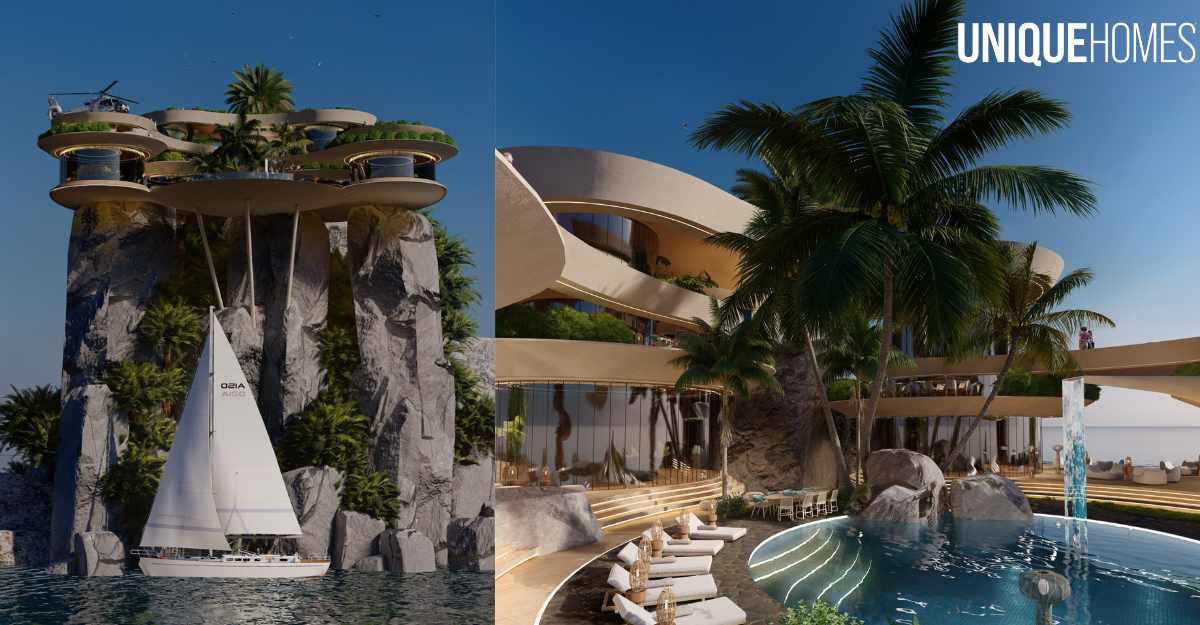

Cuban architect Jorge Luiz Veliz Quintana of Veliz Arquitecto, spared no detail in his creation of the concept design for Ronalo’s dream mansion. Veliz is known for his contemporary and avant-garde work and is recognized worldwide as a talented artist. Notably, he secured accolades at the prestigious Golden Trezzini Awards for Architecture and Design.
Veliz has brought his many talents to hotel and commercial products, creating spaces that satisfy the needs of his clients and inspire. And recently, as the principal architect for Christiano Ronald’s mansion, he displays his innovation and vision for creating solutions for architectuel and design demands of the future.
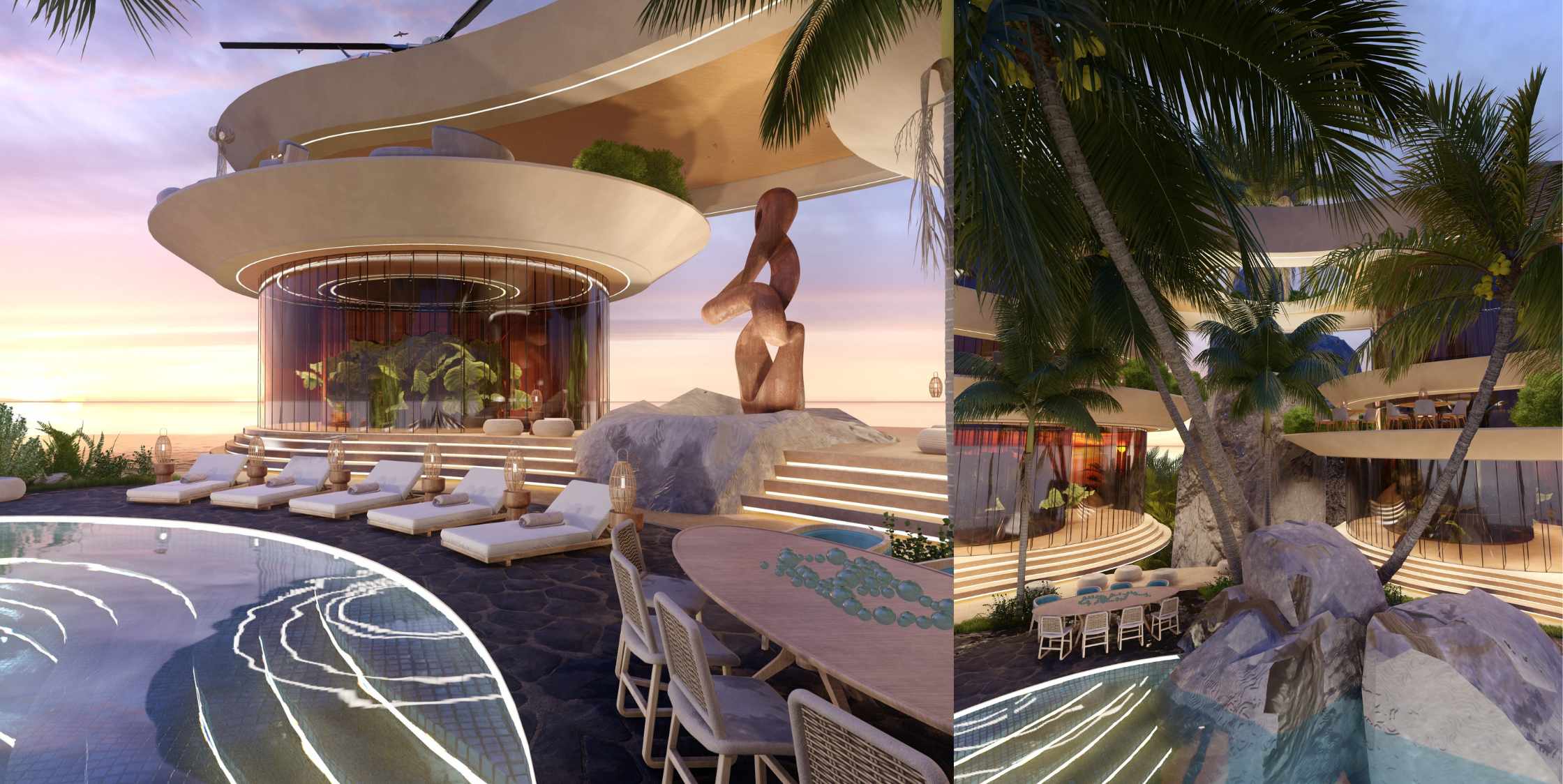
A haven of elegance, opulence and beauty, the design for Ronaldo’s Miami home is a creative an architectural feat. Positioned atop an artificial rock in the ocean, this property is all about location. The house is shaped like the letter “C” as a tribute to the iconic footballer’s name; however, the shape also maximizes views of the natural surrounding beauty.
A helipad on the top floor allows visitors to arrive in style and comfort, while guaranteeing the utmost privacy of the inevitable A-list guests. A waterfall that flows from the second floor in the pool creates a serene oasis, while the stunning round pool is the crown jewel of the home and serves as the perfect place to relax and enjoy the view. Equipped with a special mechanism, the pool can close instantly and transform the space into an area for events and parties.

With three levels, the mansion includes five bedrooms, each with their own private bathroom. Moreover, a fully equipped gym will satisfy the soccer stars training regimen. Finally, the state-of-the-art home theater is the perfect luxury environment for movie lovers. We can’t wait to see this truly unique home come to life.

Toyota Woven City will expand mobility, enhance humanity, and engage society by exploring new inventions in a test-course community.
In 2018, Toyota Motor Corporation announced the Woven City concept, aiming to transform an automobile company into a comprehensive mobility provider. This expanded vision will be redefined by integrating healthcare, food and agriculture, energy, finance, and education to enhance daily life with ease and joy, amplifying human potential. This innovative city will be driven by the pursuit of well-being for all. Phase 1 of construction is slated for completion in the summer of 2024. Preparations for initial trials are set to commence in 2025.
Here, we dive into all things Woven City and the captivating details of its future development. Creativity lies at the center of this ambitious endeavor. At its core, the Woven City will be composed of Toyota group developers, partner corporations, startups, entrepreneurs, and residents of all generations. This diverse collective will collaborate to develop inventions designed to enrich day-to-day life.
Everyone in Woven City is an inventor, united in their shared commitment to turning visionary ideas into practical innovations that serve the greater good. Together with surrounding communities, Toyota will demonstrate what mobility can do for people. After thorough testing, the inventions from Woven City will be shared with the world.
“As a global society, we need to come together to heal, grow, learn, and create new possibilities for a collective future,” states Akio Toyoda, the chairman of the board of Toyota Motor Corporation. “It is only through partnership and collaboration that we will realize the dream of not just mobility for all, but a better quality of life for all.” The concept of the city emphasizes that people have different needs and preferences, which is why the focus is on achieving well-being, not uniform happiness.
In Woven City, mobility will be cutting-edge, with above-ground and underground routes for human-centered travel. Dedicated paths will serve specific functions, including commercial deliveries and public transportation, ensuring safety and efficiency. The community will feature three surface pathways: one for automated mobility, another for pedestrians, and a third for a mix of pedestrians and personal mobility. Below ground, a fourth pathway will exclusively handle goods transport.
For Toyota, Woven City isn’t just an exciting new venture — it’s a tribute to the company’s rich history. The city will be built on a manufacturing site that previously accommodated the Toyota Motor East Japan, the Higashi-Fuji plant. Here, Toyota led Japan’s motorization and manufactured many iconic cars from the late 1960s to 2020.
This is an opportunity for Toyota to continue building on its astounding legacy. Spanning across 175 acres, Woven City will begin with an initial population of 360 residents, which is projected to expand to 2,000. Driven by three primary concepts: human-centered, a living laboratory, and ever-evolving, Woven City will continue to advance for years to come.

The everlasting allure of gold jewelry is indisputable — but it takes a true gem of a jeweler to produce a perfect balance of elegance and extravagance. Lauren Harwell Godfrey’s collections debuted at Paris Fashion Week in 2018. Unique Homes spoke with her about her inspirations and the grasp that gold has on fashion.
Godfrey’s 18-karat gold pieces were crafted with intention and significant cultural appreciation. “The aesthetic of ancient African textiles and patterns appealed to me because of my heritage as an African American, and because those are motifs that I personally love,” says Godfrey.
Before designing with fine materials, Godfrey used leather and crystals. Captivated by the energies ascribed to various crystals, she learned that the concept also applies to finer gems. Healing energy is a prominent focus in her designs, along with the ethical sourcing of materials.
Godfrey’s personal jewelry staple is the classic, yet versatile gold bangle. “I love that they can be worn alone, or as an individualized statement. They can be dressed up or down — they look equally as good with jeans and a t-shirt as they do with a gown,” she says.
No longer a fashion faux pas, Godfrey predicts that mixing metals will be the next big thing, along with heavy gold statement chains. “It’s a chic, classic piece that belongs in every collection.”

The Snake Bangle is set with vibrant emerald hearts and green turquoise triangle scales. $54,000

The striking blue sapphire in the Petunia Ring pairs with sparkling tanzanite, exuding pure lavishness. $10,500

A classic gold bangle with a twist, The Double Baguette Stud Bangle has 3 variations: diamond, rainbow, or emerald baguette gemstone details. $18,995

The Princess Pearl’s Aqua Cocktail Earrings boast diamonds, aquamarine, tourmaline, pearl, and mother of pearl — a ravishing combination of radiant gemstones and geometric placements. $12,150

In an era of virtual reality and high-tech video games that immerse players into incredibly realistic battlefields or Formula One racetracks, one might think the classic pinball machine is hopelessly antiquated. But with new generations of admirers, the silver ball rolls on while vintage machines are enduringly hot collectibles.
Jon Chad, an illustrator and educator who uses an engaging comic book style to enlighten readers, is author of Pinball: A Graphic History of the Silver Ball, an account of the pinball machine’s unique role in American culture. In his book, Chad describes a 1942 ban on pinball machines in New York City (a prohibition that lasted 30 years), with Mayor Fiorello La Guardia destroying more than 11,000 machines, dumping many into the Hudson River. Despite the largely unfounded hysteria, the author reports, “In the American subconscious, there are still images of gambling and the criminal world associated with pinball.”
The machines that dominated arcades in the 20th century (when not prohibited) were inspired by bagatelle, a modification of billiards that emerged in 18th century France. “Pinball may be derived from bagatelle, but the game we see today is almost entirely a product of American invention and ingenuity,” reports Chad. The coin-operated games that drained the pockets of American youth debuted in the 1930s and their electromechanical (EM) technology — featuring wired switches, relays and lights — presented a dynamic experience accompanied by the game’s quintessential chimes and bells.
The player-controlled flippers that revolutionized pinball were introduced by Gottlieb, a venerable manufacturer, in a 1947 Humpty Dumpty-themed machine. In the 1950s, machines were referred to as “wood rails” because of their distinctive wood side rails, and many presented the eye-popping illustrations of the great pinball artist Roy Parker. The microprocessors of early computers were integrated into “solid- state” pinball machines in the 1970s and more advanced digital technology was introduced in the 1990s. But with competition from portable video game devices like PlayStation, America’s love affair with the addictive pinball machine was severely challenged.
However, pinball machines have experienced another renaissance in the last decade, with machines offering special effects that never could have been imagined in prior eras. Advanced technologies and contemporary themes have attracted a new generation of players accustomed to digital gaming. Meanwhile, the nostalgic value of the garishly appointed machines continues to fuel a massive market for collectors.
What makes pinball machines so beloved by collectors are the colorful pop culture themes that essentially time-stamp them to an era, reinforcing their sentimental value. Machines with art depicting Evel Knievel, the rock band Kiss or Playboy magazine resonate with those who came of age in the 1970s, while the superhero Flash Gordon and horror personality Elvira adorned machines released in the 1980s.
Insisting the game is very much alive, Chad states, “In-person pinball scratches a different itch than video games,” and suggests the quirky variables of brick-and-mortar settings, such as the floor the machine sits on, enhance the experience. “It plays differently every single time, something you can’t get from a video game,” he says. While Chad appreciates the distinctive sounds of the EM era, the author favors the more expressive storytelling that emerged in machines during the 1990s.
Stern Pinball, a business whose lineage dates to the early 1930s, is the world’s largest pinball machine manufacturer, based in the recognized capital of the game, Chicago. Stern’s titles reflect both pop culture icons (e.g., Star Wars, Elvis, James Bond) and contemporary themes (e.g., The Mandalorian, Foo Fighters). “At Stern Pinball, our machines are always evolving and improving, inspiring a lifetime love of games for folks all over the world,” says Seth Davis, the company’s CEO.
While some collectors are enamored with nostalgic machines from the last century, Davis reports, “Without question, this current era of pinball machines is my favorite.” Referencing a new platform that connects the entire universe of Stern Pinball machines, he adds, “What we’ve been able to accomplish with Insider Connected is just the tip of the iceberg, evolving the entire pinball gaming experience for gamers around the world.”
Addressing the challenge of balancing tradition and new technology, Davis states, “Stern Pinball is always working to create a better experience for players, by changing the landscape of the gaming industry while still honoring classic, iconic pinball designs.” Emphasizing the game’s international appeal — Stern Pinball machines are distributed in 50 different countries — Davis adds, “Through technology such as Insider Connected, we’re connecting players globally, which helps the game prosper outside of the U.S.”
Residing outside Richmond, Virginia, Taylor Reese is a respected pinball machine collector, restoration specialist, competitive player, and pinball podcaster. “Some people really love the classic machines, drawn by their nostalgic themes, artwork and layout of the games, but I love the modern machines,” reports Reese. The pinball enthusiast reports that Attack from Mars (released in the 1990s) and Godzilla, a contemporary machine that also happens to be a personal favorite of Davis, are among the most prized machines in his own impressively decorated game room. Suggesting the physicality and unpredictability of pinball has an enduring appeal in the digital age, Reese states, “Every time I step up to play, I have no idea how the game’s going to end.” He adds, “Unlike video games, pinball feels more like an event, and people are looking for ways to socialize after spending so much time staring into screens.”
Roger Grody
A native of Upstate New York but longtime Southern California resident, Roger is an award-winning lifestyle journalist specializing in food/wine, architecture/design and travel. A former city planner, he has a passion for writing about cities and the evolution of neighborhoods, documenting Los Angeles and other California destinations in Fodors, Gayot and DK travel guides. In addition to Unique Homes and its sister publications, Roger’s work has appeared in California Homes, Westways, Sunset, Hemispheres, as well as other lifestyle publications or websites. A resident of Pasadena, California, Roger holds a J.D. degree from Arizona State and M.A. from The University of Chicago.